Another artist recently asked “where are the squares…. have you finished with them?!!” I was aware that through the last few paintings the squares have diminished and then appear to have vanished as I started the ‘Peg’ series, but as I peg out my new line, have the squares indeed died as a device to play with colour and pattern?
The squares have a long history with me, starting I suppose with a reaction against the ease of making representational paintings, which were both popular and sold well. This made me uneasy, fool that I am, and made me wonder what I was trying to say through my art. I began to make the paintings more complex and more about the activity itself and a little less about the world around me.
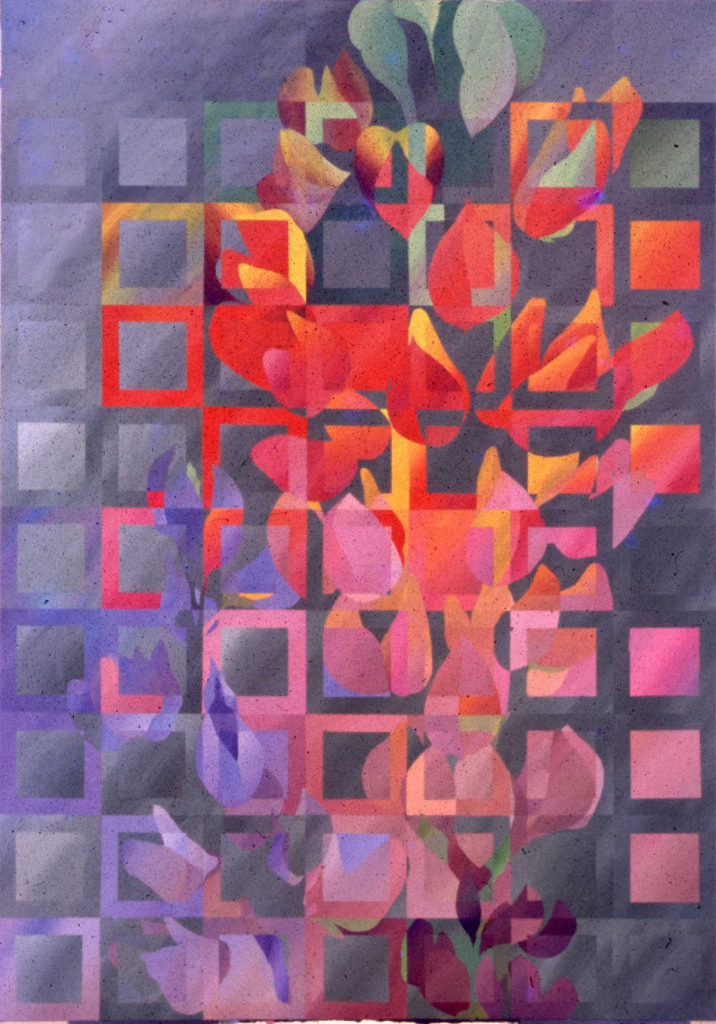
‘Lupin’. Acrylic on Canvas 5 feet x 3’6″ Circa 1978. Formed the basis of the 1994 ten meters high Morley College mural ‘Tree of Life’. Now in a private collection in Australia
The grid is a traditional painters device used for centuries to transfer a smaller drawn image onto a larger canvas. The scale of canvas is a major decision which I make according to the scale of the brush mark I want to use taking account, of course, of the size of my studio. My small representational paintings were made when I lived in one room in Hove and as time has passed, I have been able to increase the scale of work. I love paintings, like Monet’s landscapes, that one can walk into visually, immersing oneself in the colour relationships. Colour speaks to the emotions, is visceral, and can exist independently of image, and scale matters.
I used the grids to retain the image whilst breaking the colour free to allow it to form independent relationships. Gradually over time this has developed into field paintings of a kind, and the grid also expanded until there were fewer squares and then with the peg paintings, no squares at all. The ‘peg’ images have taken me back into a form or representation again and this has had several effects, the first of which is to strengthen both the link to photography and the second to reinforce the importance of drawing in constructing the image to go on the canvas.
My working practice continues to be derived from my environment and my methods of recording it using both sketch book and camera. Looking back over the last year I can see the slow dissolution of the square in moving onto canvas. I think at the moment the image form I am using allows me simplicity in the visual construction for the canvas, but I can foresee that using the golden section or the other visual constructional devices that go back to the Renaissance ( I particularly remember the analysis of Piero della Francesca’s Crucifixion images) may become an issue.
With the use of the square/constructional grid I had no problem making the whole surface active, as you can see from the examples here, but as I look at the latest painting (top) completed I am critical of myself to not foreseeing the visual constructional problems that forced me to pause halfway through and go back to drawing to arrive at something approaching a satisfactory visual conclusion.
All my paintings start from my enjoyment of my visual world, and the image stories I create and show on my Facebook page are as important an expression of this for me as the more formalised realisation of ideas in the studio. As to where I go from here only time and work will tell. The next peg paintings are on their way. Is the square grid dead? I doubt it somehow but what will be will be – I may overthink things, but, as Popeye said, ‘I yam what I yam’.


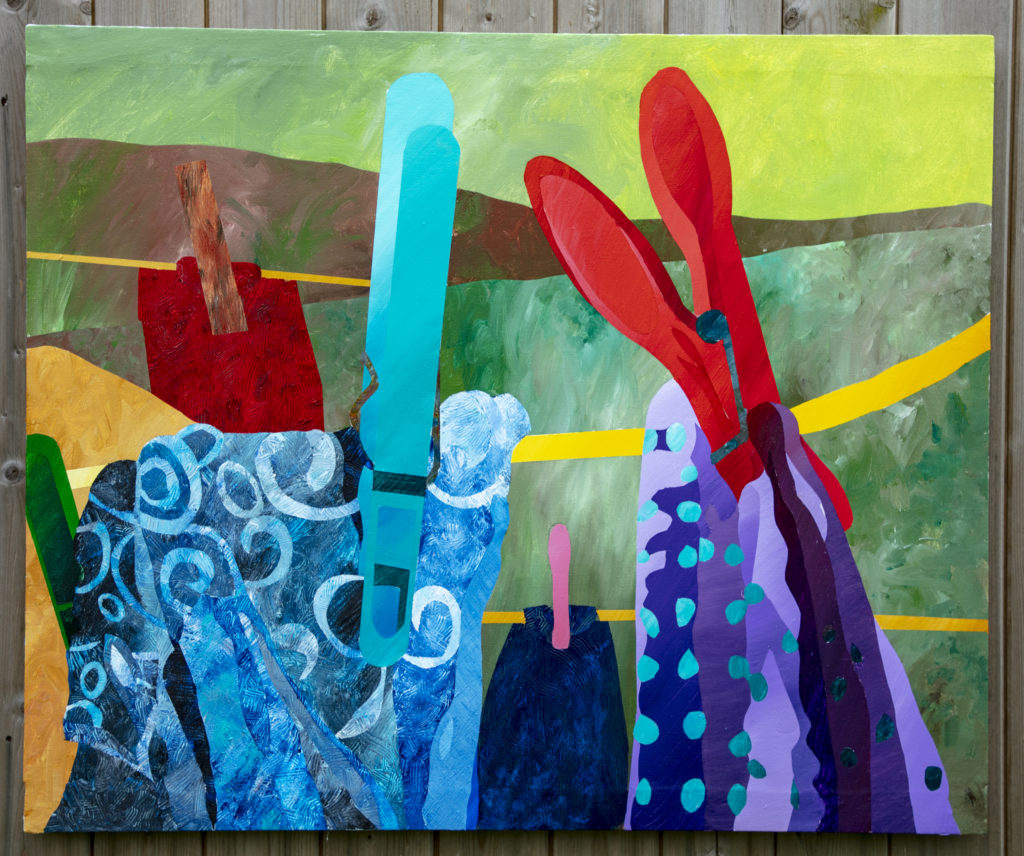
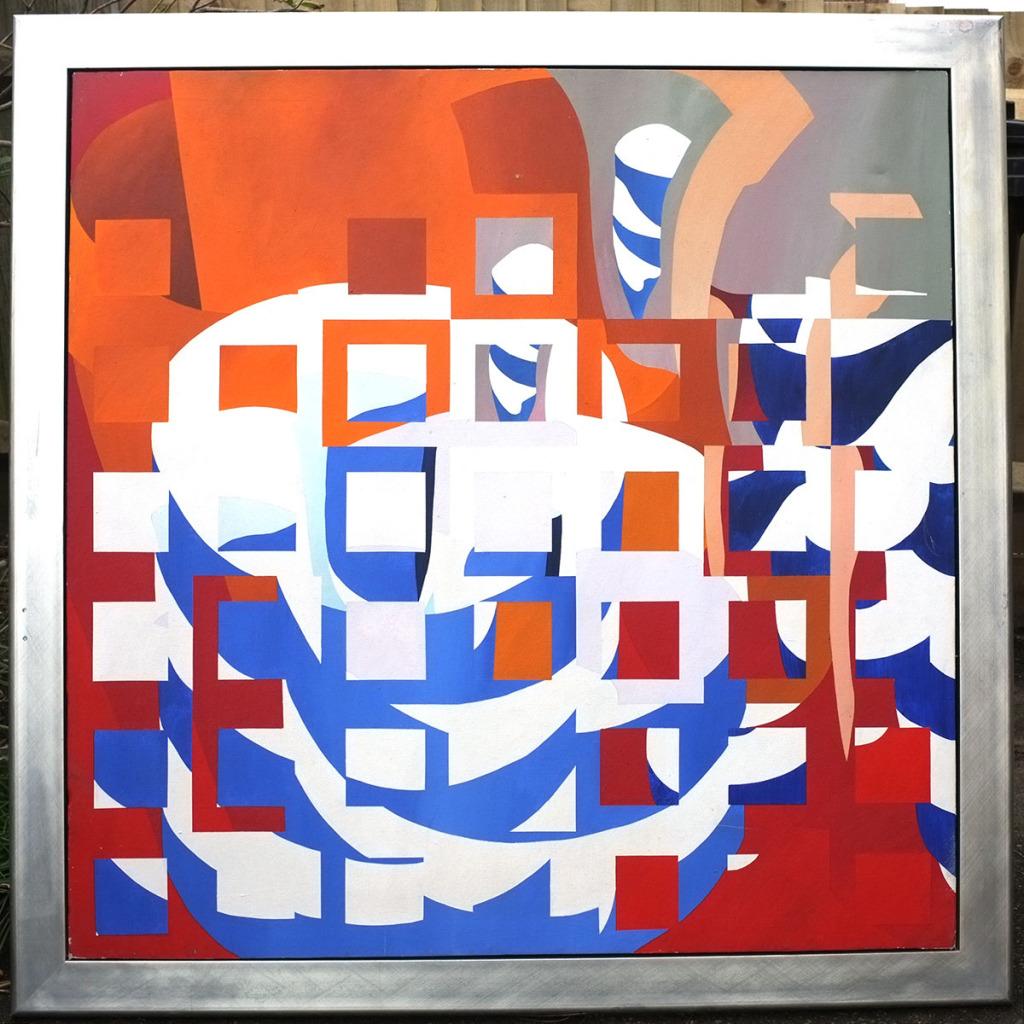
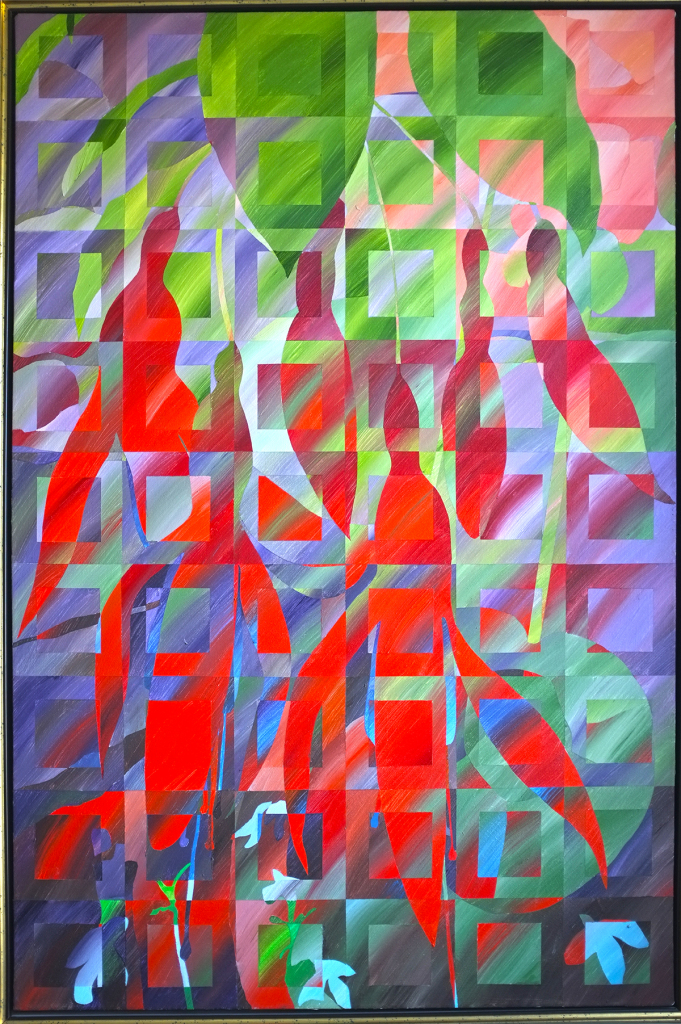
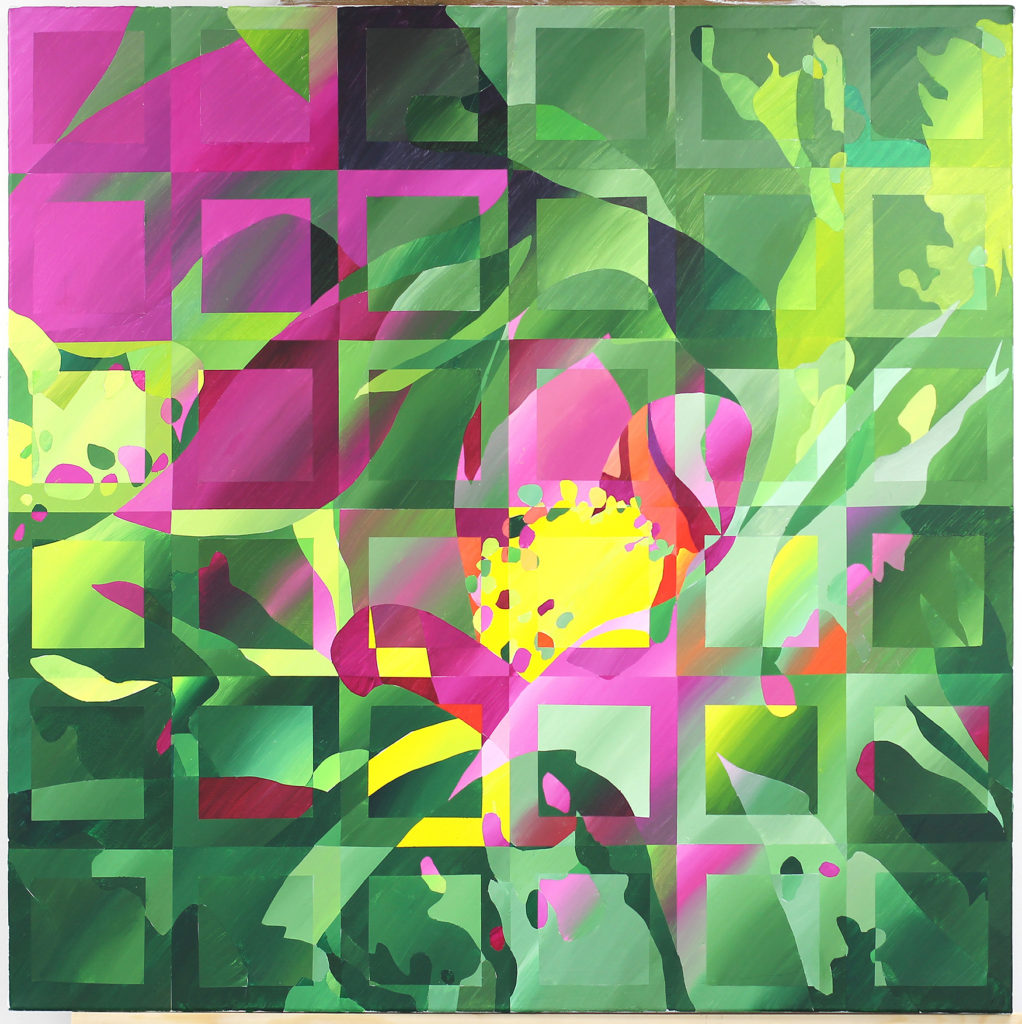
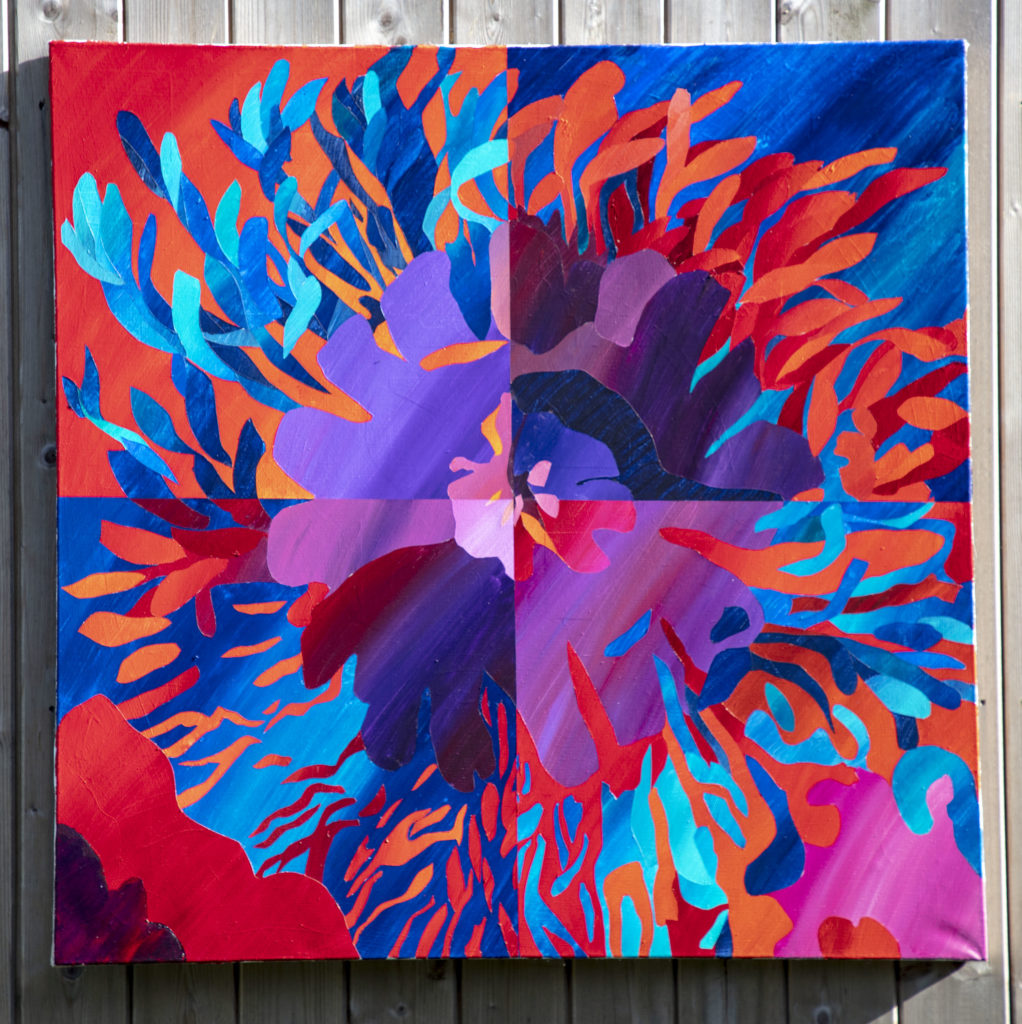
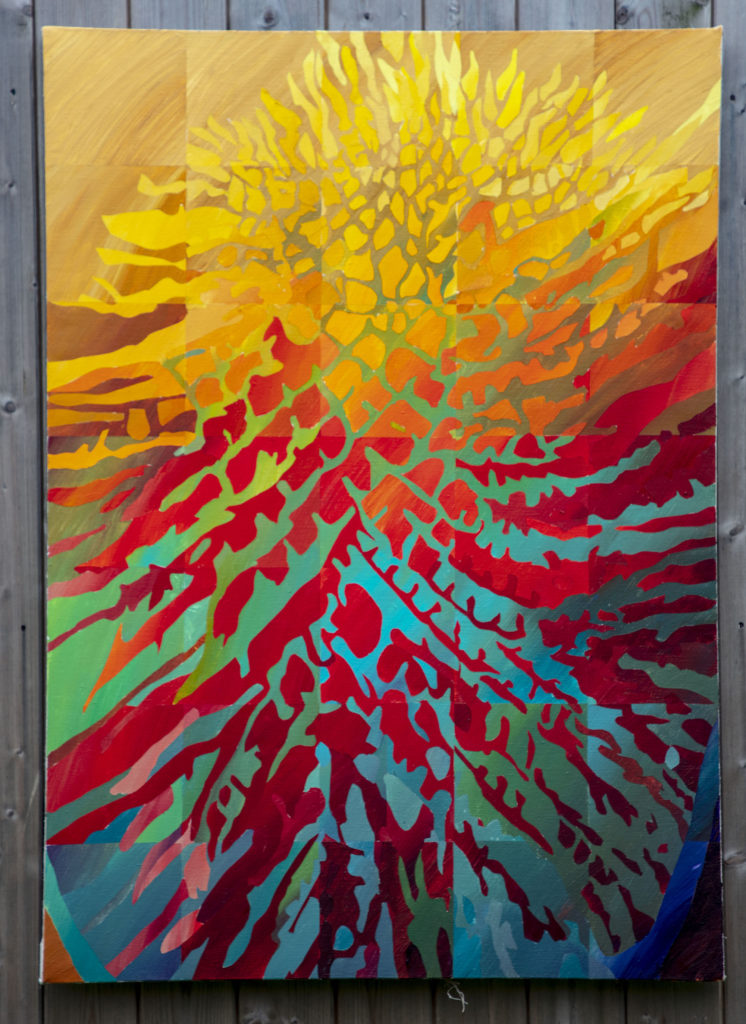
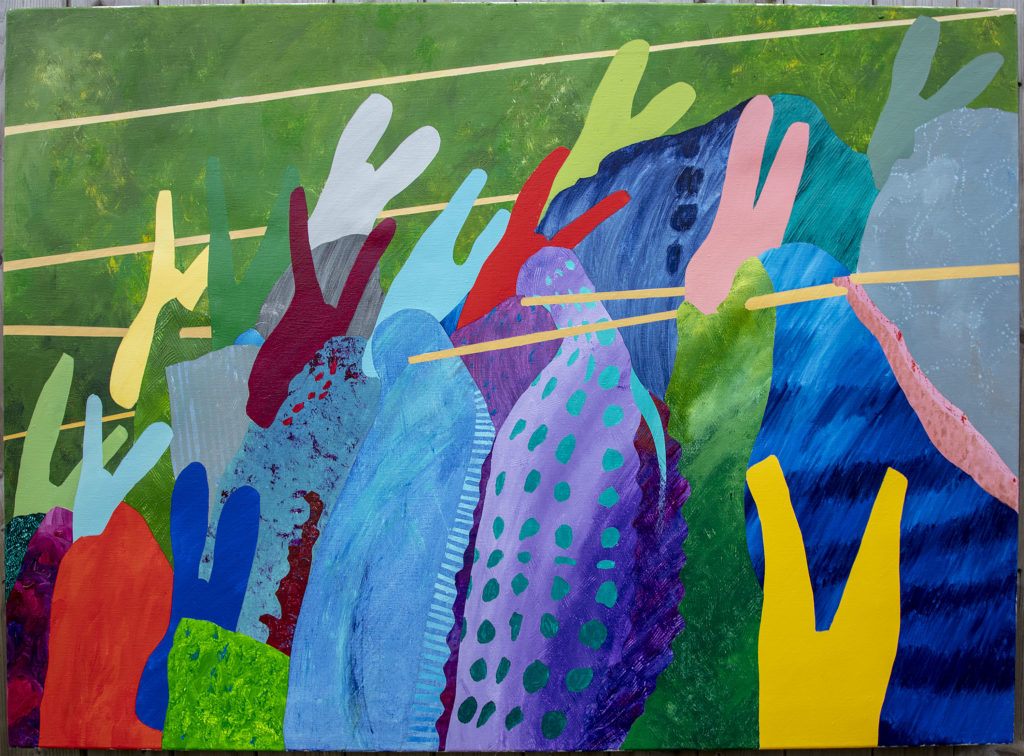
Recent Comments